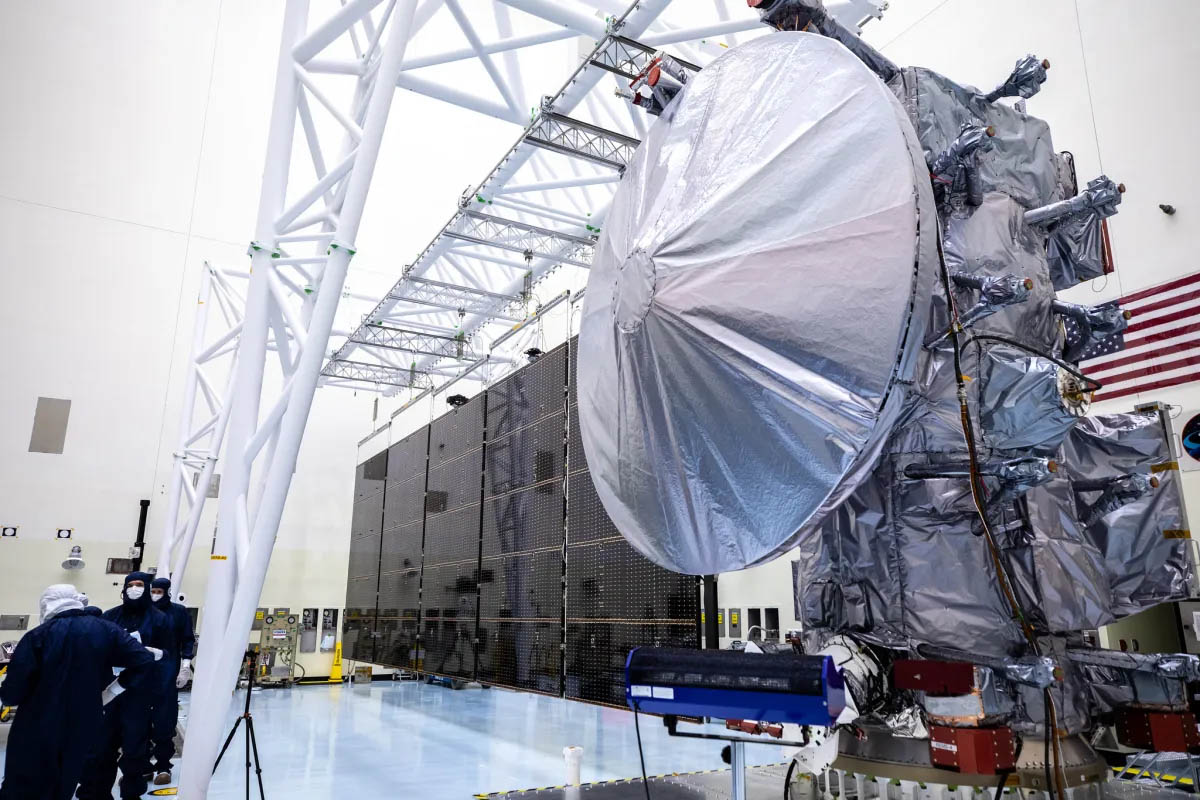SCIENCE: NASA’s Europa Clipper mission is set to launch in October, as tests confirmed the spacecraft can handle the harsh radiation environment around one of Jupiter’s most intriguing moons. The Europa Clipper spacecraft aims to study Jupiter’s icy moon Europa, which is thought to have an ocean that contains twice as much water as all of Earth’s seas combined. Equipped with nine instruments, including cameras, ground-penetrating radar and spectrometers, the spacecraft will perform several close flybys of the moon and investigate the environment beneath Europa’s icy crust and search for signs of life as we know it.
The spacecraft is scheduled to launch atop a SpaceX Falcon Heavy rocket from Launch Complex 39A at NASA’s Kennedy Space Center in Florida, with a targeted launch window opening on Oct. 10, the space agency announced Tuesday (Sept. 3). “Clipper’s primary science goal is to determine whether there are places beneath Europa’s surface that could support life,” NASA officials said in the announcement. “The mission’s three main science objectives are to understand the nature of the ice shell and the ocean beneath it, as well as the moon’s composition and geology. The mission’s detailed exploration of Europa will help scientists better understand the astrobiological potential of habitable worlds beyond our planet.” Concerns were previously raised about the spacecraft’s ability to survive in the high radiation environment created by Jupiter’s powerful magnetic field, when its transistors — devices that control the flow of electricity on the probe — failed at lower-than-expected radiation doses. However, recent tests have confirmed that the transistors “can support a baseline mission,” NASA officials said in a statement. With an expected arrival at Jupiter in 2030, the baseline mission involves flying past Europa about 50 times between 2031 and 2034.
